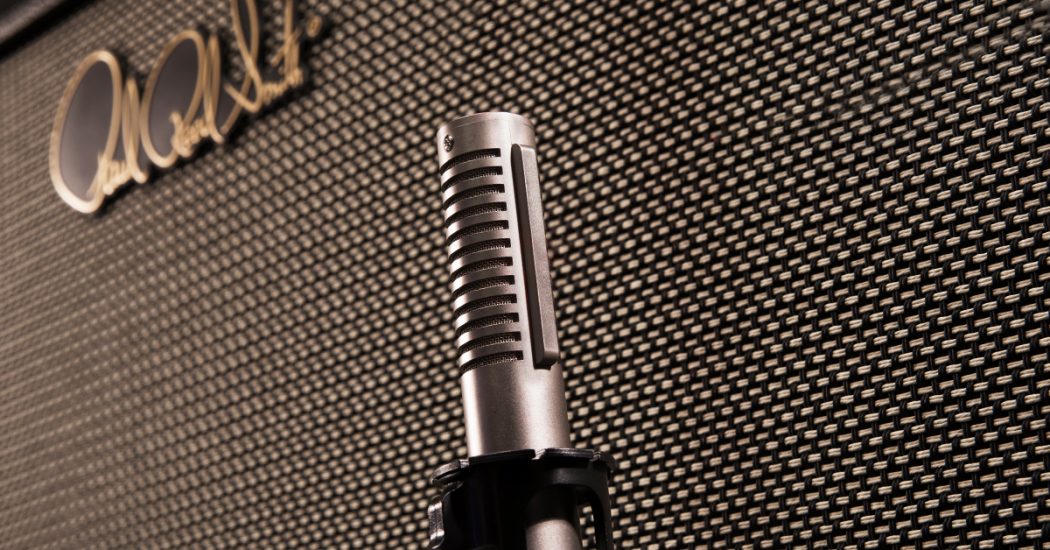
I discovered ribbon mics late in my career, after I’d been engineering for 20 years. I only knew the classics before that, such as the RCA 44 and 77-DX, which looked great in glass cases or in photos of music stars of previous generations. Then in about 2001, I used some of the newer generation of ribbon mics, and I fell in love with them: the Royer R-121 and R-122, the AEA R84 and R88, along with standards such as the Coles 4038 and Beyerdynamic M 160 and M500. I was hooked, with my ribbon mic collection eventually topping out over a dozen mics, ranging in date of origin from 1932 all the way to the present. But I used them primarily in the studio and became very familiar with their strengths. I learned to love the figure-8 pattern and recognize where it truly excelled.
In the studio, I use ribbons on drums as room mics, on electric guitar cabinets, on woodwinds, strings, brass instruments, and percussion. They can handle the high SPLs in front of a kick drum or staring down the bell of a trumpet. But what about live situations? Were there applications where those strengths could be applied in the far less controlled situations that I encountered live? After some experimentation, the answer is a resounding “Yes.” Let’s talk about how you can get great sound using ribbons on the live stage and also solve problems that you may frequently encounter.
That Ribbon Sound
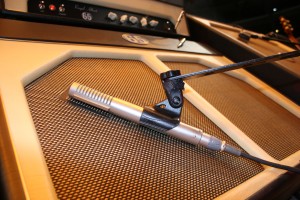
Keith Urban’s amp miked with an R-122. Photo courtesy of Royer Labs.
For electric guitars, which is where lots of people primarily think of using ribbon mics, there are just as many reasons to use ribbons for live as there are in the studio. First, they are great for their wonderful, unique sound compared with condensers or moving-coil dynamic mics. They have a smoother sound that some people believe mimics the human ear more closely than other mics, without the typical tizz (AEA’s Wes Dooley’s word for the narrow resonances in the 8 to 12kHz range) of a tautly stretched condenser mic’s diaphragm or the pointed midrange of a dynamic standard like the Shure SM57. For loud electric guitars, this relaxed presentation smooths out the cutting midrange of overdriven amps and still gives a low-mid push that yields powerful tone. For percussion, nothing captures the skin of a conga’s head quite as well. And on drums, they capture all the brilliance of crash cymbals without the ear-splitting sizzle. Chad Cromwell, prominent Nashville session player and Neil Young’s touring drummer, likes to keep a ribbon over his kit for monitoring. He says he feels more connected to the drums because he hears them far more naturally.
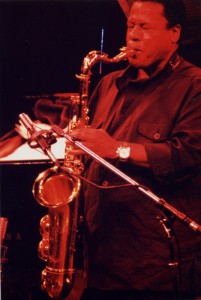
Wayne Shorter playing into the R-121. Photo courtesy of Royer Labs.
For my taste, whether ribbon mics are truly more accurate or not, I just like the way they “hear” via their incredibly natural sound. In addition to electric guitars and drums and percussion, I use them as spot mics on woodwinds such as oboe, clarinet, or sax, and I can get the best part–the tone of the instrument–without picking up mechanical noise from the keys and pads. For woodwinds, I use an R-122 with no other processing whatsoever (so long as there is no rumble from air conditioning or traffic, in which case I might need to add a highpass filter), and due to the low-frequency extension, I’ll always use a shockmount because a vibrating stage floor will come through loud and clear. For me, straight and flat (no EQ) is always the best possible solution. One mic in the right position–done. The same is true when I put an R-84 on trumpet, about 2′ away from the bell so that I don’t pick up the sonic gremlins from miking it too close, then straight into the preamp. Perfection.
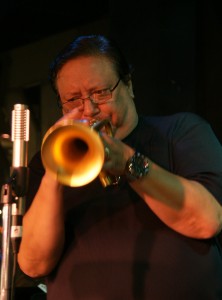
Arturo Sandoval playing into an R-122. Photo courtesy of Royer Labs.
I like to use an R-122, R121, or RCA 44-BX or 74 on trombone into a preamp with plenty of girth, and I’ve got a killer sound with no fuss. And the best part about using ribbons on brass is that I get all the tone and warmth of the instrument without any stridency or stress when musicians play really loud. Although it’s not really compression in the typical sense, it keeps the sound just right in the mix without screaming through. Any mic that gets a great sound and makes my job of mixing easier is the preferred tool for me.
Figure-8s? Onstage?
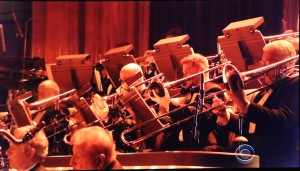
The trombone section for Sinatra’s 100-Year CBS TV Special all playing into R-121 mics. Photo courtesy of Royer Labs.
Some people object to the thought of using a figure-8 mic onstage because of the “bleed” from the back of the mic. They mistakenly think that a cardioid or hypercardioid offers greater rejection of unwanted sounds. Sometimes that is true, when lots of people are tightly smashed together onstage, but there are times when a fig-8 ribbon will actually offer greater isolation and better sound than a cardioid. When you have a row of brass players standing shoulder to shoulder, a situation that I’ve encountered lots of times, the separation between the individual horns on a fig-8 ribbon (with one mic per horn) far exceeds the isolation of a cardioid mic. When the adjacent players are in the “null” (the area that is 90 degrees off-axis) there is absolute cancellation, so you can have a trombone player standing right next to the trumpet player and barely hear the trombone sound on the trumpet mic at all. Plus it sounds better. I’ve used ribbons on brass in live situations lots of times. They sound amazing.
Let me offer another example of when a ribbon worked better than a cardioid dynamic. I had a percussionist who was playing congas just a few feet in front of a 120-voice choir–a very loud, enthusiastic gospel choir. This was for a live show that was also being recorded for a subsequent live release. By putting an R-122 directly over the congas with the ribbon horizontal, parallel to the stage, so that the choir was directly in the null of the fig-8 pattern, I got a great conga sound and inconsequential bleed from the choir.
We Don’t Need No Stinkin’ Leakage
But what about the leakage into the back of the mic? Well, there’s this law called the inverse distance law that states “sound pressure is inversely proportional to the distance from the sound source.” Huh? The formula means that sound propagation in an idealized free field results in a 6 dB drop in sound pressure level each time the distance from the source is doubled. While it’s not quite that simple in a live sound environment with lots of reflections, it still means that sounds entering the back of microphone will be softer based on their relative amplitude and distance from the microphone. With the typical gain structure required for a mic that is right in front of a guitar cab, the incoming signal from behind the mic (unless it’s stupidly loud or very close) is going to be lots softer by comparison. There are also some unidirectional ribbons like the AEA KU4 or legendary Beyerdynamic M 160 that is a unique hypercardioid double-ribbon mic that minimize sound leakage from the rear. Or there are some clever compact solutions like the sE guitaRF Reflexion filter to keep sounds out of the back of a ribbon.
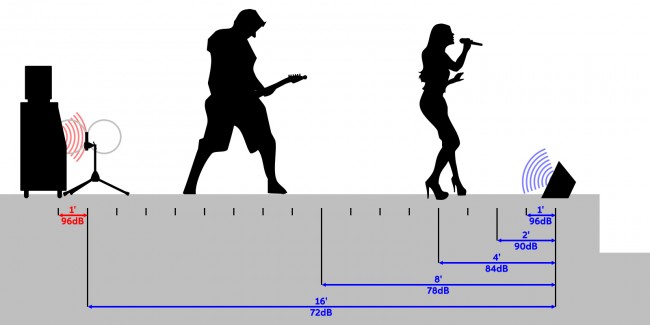
Won’t They Break?
But what about durability? Well, I’d never take my 1932 RCA PB-90 or my 1960 RCA 77-DX out on the road, but I have no qualms about using my current generation ribbons in live settings. The Royers, such as their Live Series or the affordable R-101, are incredibly durable and will hold up to live use with a modicum of precaution. Don’t blow into them! (“Mic test: Hoo-hoo.”) The AEA N22 is another very durable choice. Others such as the Shure KSM313/NE even offer ribbons made of Roswellite, which utilizes carbon-nanotube technology to make them virtually indestructible.
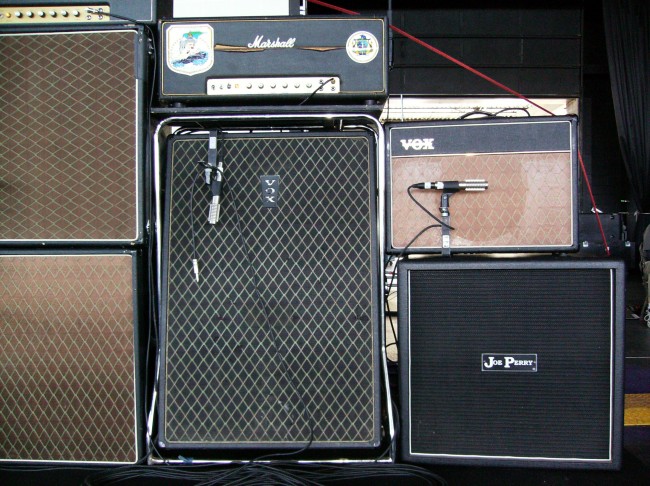
Aerosmith’s Joe Perry has R-121s all over his amps. Photo courtesy of Royer Labs.
Who Would Use Ribbons on the Road?
If you decide you want to use ribbon mics on the road, you’ll be in good company. Royer Mics’ John Jennings related this story: “When Aerosmith’s Just Push Play tour started in 2001, Joe Perry’s guitar mics were picking up too much sound from other instruments on the stage. The problem was solved by putting five Royer R-121‘s on Joe’s cabinets, a practice the band continues to this day. All sounds approaching the sides of the mic were eliminated – bleed problem solved. And the tone was killer! Joe appreciated being able to use the same mics on the road that he used in the studio.”
Here’s a list of current touring artists and how they are using their Royer ribbon mics on the road.
- Aerosmith – Joe Perry’s electric guitars
- George Strait – electric guitars, pedal steel guitars, drum overheads
- Keith Urban – electric guitars, drum overheads (single point stereo ribbon)
- Maroon Five – electric guitars, stereo ribbon mic to record the audience
- Matchbox Twenty – electric guitars
- Phish – electric guitars, drum overheads
- Harry Connick, Jr. – large brass section
- Arturo Sandoval – trumpet
- Johnny Marr – electric guitar
- Muse – electric guitar
- Brian Setzer – electric guitar, brass
- Stereophonics – electric guitars
- Fleetwood Mac – electric guitars
- The Rolling Stones – drum overheads
- Return to Forever – Al Di Meola’s electric guitar
- Goo Goo Dolls – electric guitars
- Barry Manilow – brass section
- Crosby, Stills & Nash – guitars
If ribbon mics work for these artists on the road, maybe it’s time you give ribbon mics a try for your next live sound gig. Call your Sweetwater Sales Engineer and find out which of these would work best for you.




